This article needs additional citations for verification .(March 2008) |
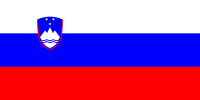
The National symbols of Slovenia are the symbols used in Slovenia and abroad to represent the nation and its people.
This article needs additional citations for verification .(March 2008) |

The National symbols of Slovenia are the symbols used in Slovenia and abroad to represent the nation and its people.



Slovenia, officially the Republic of Slovenia, is a country in southern Central Europe. It is bordered by Italy to the west, Austria to the north, Hungary to the northeast, Croatia to the southeast, and the Adriatic Sea to the southwest. Slovenia is mostly mountainous and forested, covers 20,271 square kilometres (7,827 sq mi), and has a population of 2.1 million. Slovenes constitute over 80% of the country's population. Slovene, a South Slavic language, is the official language. Slovenia has a predominantly temperate continental climate, with the exception of the Slovene Littoral and the Julian Alps. A sub-mediterranean climate reaches to the northern extensions of the Dinaric Alps that traverse the country in a northwest–southeast direction. The Julian Alps in the northwest have an alpine climate. Toward the northeastern Pannonian Basin, a continental climate is more pronounced. Ljubljana, the capital and largest city of Slovenia, is geographically situated near the centre of the country.
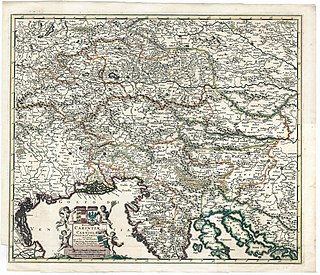
The history of Slovenia chronicles the period of the Slovenian territory from the 5th century BC to the present. In the Early Bronze Age, Proto-Illyrian tribes settled an area stretching from present-day Albania to the city of Trieste. The Slovenian territory was part of the Roman Empire, and it was devastated by the Migration Period's incursions during late Antiquity and the Early Middle Ages. The main route from the Pannonian plain to Italy ran through present-day Slovenia. Alpine Slavs, ancestors of modern-day Slovenians, settled the area in the late 6th Century AD. The Holy Roman Empire controlled the land for nearly 1,000 years, and between the mid-14th century and 1918 most of Slovenia was under Habsburg rule. In 1918, most Slovene territory became part of the Kingdom of Serbs, Croats, and Slovenes, and in 1929 the Drava Banovina was created within the Kingdom of Yugoslavia with its capital in Ljubljana, corresponding to Slovenian-majority territories within the state. The Socialist Republic of Slovenia was created in 1945 as part of federal Yugoslavia. Slovenia gained its independence from Yugoslavia in June 1991, and today it is a member of the European Union and NATO.
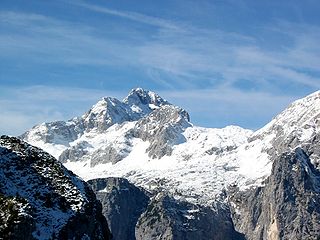
Triglav, with an elevation of 2,863.65 metres (9,395.2 ft), is the highest mountain in Slovenia and the highest peak of the Julian Alps. The mountain is the pre-eminent symbol of the Slovene nation. It is the centrepiece of Triglav National Park, Slovenia's only national park. Triglav was also the highest peak in Yugoslavia before Slovenia's independence in 1991.

Carantania, also known as Carentania, was a Slavic principality that emerged in the second half of the 7th century, in the territory of present-day southern Austria and north-eastern Slovenia. It was the predecessor of the March of Carinthia, created within the Carolingian Empire in 889.

The national flag of Slovenia features three equal horizontal bands of white (top), blue, and red, with the coat of arms of Slovenia located in the upper hoist side of the flag centred in the white and blue bands. The coat of arms is a shield with the image of Mount Triglav, Slovenia's highest peak, in white against a blue background at the centre; beneath it are two wavy blue lines representing the Adriatic Sea and local rivers, and above it are three six-pointed golden stars arranged in an inverted triangle which are taken from the coat of arms of the Counts of Celje, the great Slovene dynastic house of the late 14th and early 15th centuries.

The Slovenes, also known as Slovenians, are a South Slavic ethnic group native to Slovenia, and adjacent regions in Italy, Austria and Hungary. Slovenes share a common ancestry, culture, history and speak Slovene as their native language. They are closely related to other South Slavic ethnic groups, as well as more distantly to West Slavs.
"Naprej, zastava slave" or "Naprej, zastava Slave" is a former national anthem of Slovenia, used from 1860 to 1989. It is now used as the official service song of the Slovenian Armed Forces.
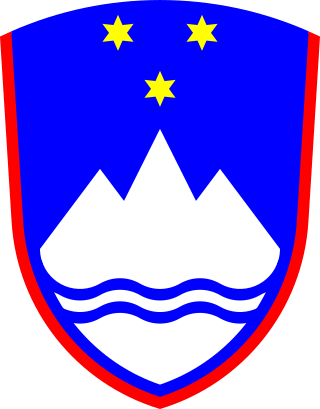
The Slovene coat of arms is an emblem that consists of a red bordered blue shield on which there is a stylised white Mount Triglav, under which there are two wavy lines representing the sea and the rivers of the country. Above Mount Triglav, there are three golden six-pointed stars representing the Counts of Celje. It was designed in 1991 by Marko Pogačnik and adopted on 24 June 1991.
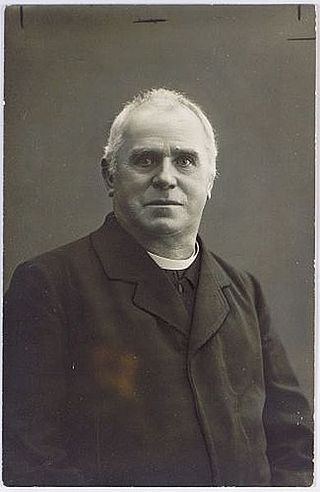
Jakob Aljaž was a Slovene Roman Catholic priest, composer and mountaineer.
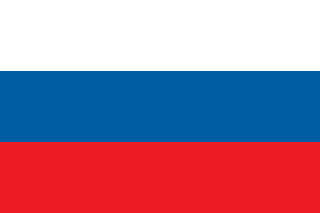
The Duchy of Carniola was an imperial estate of the Holy Roman Empire, established under Habsburg rule on the territory of the former East Frankish March of Carniola in 1364. A hereditary land of the Habsburg monarchy, it became a constituent land of the Austrian Empire in 1804 and part of the Kingdom of Illyria until 1849. A separate crown land from 1849, it was incorporated into the Cisleithanian territories of Austria-Hungary from 1867 until the state's dissolution in 1918. Its capital was Ljubljana.
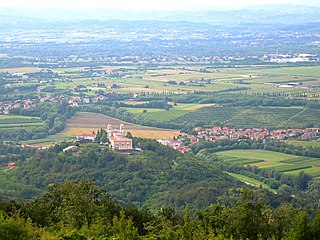
Goriška is a historical region in western Slovenia on the border with Italy. It comprises the northern part of the wider traditional region of the Slovenian Littoral (Primorska). The name Goriška is an adjective referring to the city of Gorizia, its historical and cultural centre.
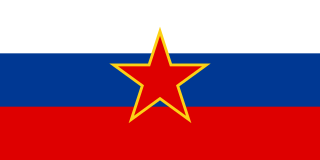
The Socialist Republic of Slovenia, commonly referred to as Socialist Slovenia or simply Slovenia, was one of the six federal republics forming Yugoslavia and the nation state of the Slovenes. It existed under various names from its creation on 29 November 1945 until 25 June 1991.

The black panther, also known as the Carantanian panther after the Medieval principality of Carantania, is a Carinthian historical symbol, which represents a stylized heraldic panther. As a heraldic symbol, it appeared on the coat of arms of the Carinthian Duke Herman II as well as of the Styrian Margrave Ottokar III. In this region it was most frequently imaged on various monuments and tombstones. The symbol can still be found in the coat of arms of the Austrian state of Styria, although the colours have changed. The symbol is also widely used within structures of the Slovenian security forces; namely by the Slovenian Armed Forces and the Slovenian Police. Since 1991, there have been several proposals to replace the Slovenian coat of arms with the black panther.

The following outline is provided as an overview of and topical guide to Slovenia:
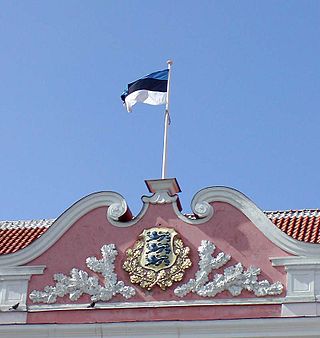
The national symbols of Estonia are flags, coat of arms, icons or cultural expressions that are emblematic, representative or otherwise characteristic of Estonia or Estonian culture.
Jožko Šavli was a Slovene author, self-declared historian and high school teacher in economic sciences from Italy.

The national anthem of Slovenia is based on "Zdravljica", a carmen figuratum poem by the 19th-century Romantic Slovene poet France Prešeren, inspired by the ideals of Liberté, égalité, fraternité, and set to music by Stanko Premrl. As the country's national anthem, it is one of the state symbols of Slovenia.
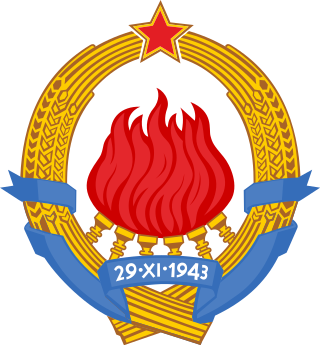
The emblem of Yugoslavia featured six torches, surrounded by wheat with a red star at its top, and burning together in one flame; this represented the brotherhood and unity of the six federal republics forming Yugoslavia: Bosnia and Herzegovina, Croatia, Macedonia, Montenegro, Serbia and Slovenia. The date imprinted was 29 November 1943, the day the Anti-Fascist Council for the National Liberation of Yugoslavia (AVNOJ) met in Jajce on its second meeting and formed the basis for post-war organisation of the country, establishing a federal republic. This day was celebrated as Republic Day after the establishment of the republic. The emblem of Yugoslavia, along with those of its constituent republics, are an example of socialist heraldry.

The triglavka or Triglav cap or the partizanka or Partizan cap is a side cap that was a part of the Yugoslav Partisan uniform in Croatia, Slovenia and western Bosnia. There, it was the most characteristic part of Partisan clothing. Despite its common name in Slovenia, the cap's design was not inspired by Mount Triglav, but was a copy of a cap design used by soldiers of the Spanish Republican faction. The first Yugoslav models were made in the second half of 1941 in Zagreb by the Communist Party activist Dobrila Jurić for Vladimir Popović and Otmar Kreačić, former fighters in the International Brigades, and organizers of the Croatian Liberation Front. In occupied Yugoslavia, the cap originated in use among Croatian Partisans in western Yugoslavia, but quickly spread through the Partisan movement, particularly among Slovene Partisans.
Symbols of Latvia are items or symbols that have symbolic meaning to, or represent, Latvia. These symbols are seen in official capacities, such as flags, coats of arms, postage stamps, and currency, and in URLs. They appear less formally as recurring themes in literature, art and folk art, heraldry, monuments, clothing, personal decoration, and as the names of parks, bridges, streets, and clubs. The less formal manifestations may be classified as national emblems.
This article includes a list of references, related reading, or external links, but its sources remain unclear because it lacks inline citations .(March 2008) |